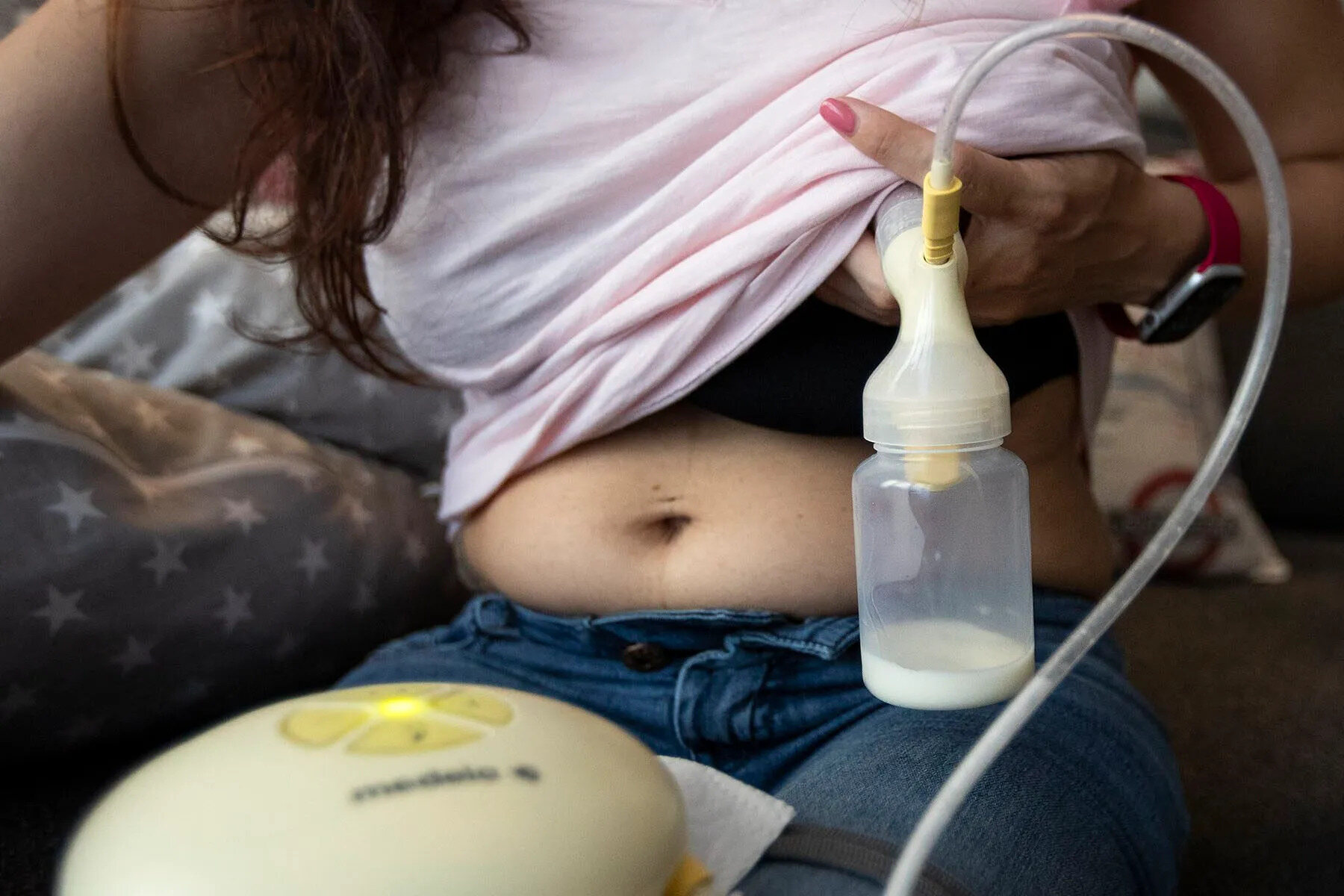

Articles
How To Store Pumped Breast Milk
Modified: October 28, 2024
Learn the best methods for storing pumped breast milk with our informative articles. Keep your baby's milk fresh and safe for future feedings.
(Many of the links in this article redirect to a specific reviewed product. Your purchase of these products through affiliate links helps to generate commission for Storables.com, at no extra cost. Learn more)
Introduction
Welcome to our comprehensive guide on how to store pumped breast milk. If you are a new mom or planning to return to work while breastfeeding, understanding the proper storage and handling of breast milk is essential for the well-being of your baby. Breast milk is a precious resource that provides numerous health benefits to your little one, and by following the correct storage guidelines, you can ensure that your breast milk remains safe and nutritious for as long as possible.
Properly storing pumped breast milk not only extends its shelf life but also helps to maintain its nutrient content, which is crucial for your baby’s growth and development. Whether you are exclusively pumping or supplementing with breast milk, having a reliable storage system will give you peace of mind and allow you to build up a stash of milk for times when you are away from your baby.
In this article, we will go through the step-by-step process of storing pumped breast milk, including choosing the right containers, labeling and organizing stored milk, freezing and thawing techniques, and important safety precautions. By following these guidelines, you can ensure that your stored breast milk remains safe, fresh, and ready for your baby’s consumption.
So, let’s dive in and learn how to properly store your precious pumped breast milk!
Key Takeaways:
- Proper storage of pumped breast milk is crucial for maintaining its quality, preserving its nutritional benefits, and ensuring its safety for your baby’s consumption.
- Choosing the right containers, labeling and organizing stored milk, and correctly freezing and thawing breast milk are essential steps for maintaining its freshness and nutritional value.
Read more: How To Store Breast Milk In Fridge
Understanding the Importance of Proper Storage of Pumped Breast Milk
Proper storage of pumped breast milk is crucial for maintaining its quality and preserving its nutritional benefits. Breast milk contains a unique blend of antibodies, enzymes, and other essential nutrients that help protect your baby from infections and support their overall growth and development.
When you pump breast milk, it is important to handle and store it correctly to prevent the growth of bacteria, maintain its nutrient content, and ensure it remains safe for your baby to consume. Here are a few key reasons why proper storage of pumped breast milk is so important:
- Maintaining Nutrient Content: Breast milk is a complex fluid that contains a variety of beneficial components, including proteins, fats, carbohydrates, vitamins, and minerals. Proper storage helps to preserve these nutrients, ensuring that your baby receives all the nourishment they need.
- Preventing Bacterial Contamination: Breast milk can become contaminated with bacteria if not stored properly. Bacterial growth can lead to spoilage and increase the risk of foodborne illnesses for your baby. Following the correct storage guidelines minimizes the chances of contamination.
- Building a Breast Milk Reserve: Storing breast milk allows you to build up a reserve that can be used when you are away from your baby or unable to breastfeed. This ensures that your baby continues to receive the benefits of breast milk even when you are not available to nurse.
- Convenience and Flexibility: Properly stored breast milk provides flexibility in your feeding routine, allowing other caregivers to feed your baby while you take a break or attend to other responsibilities.
By understanding the importance of proper storage, you can take the necessary steps to ensure that your pumped breast milk remains safe and nutritionally beneficial for your baby’s optimal health and well-being.
Step-by-Step Guide on How to Store Pumped Breast Milk
Storing pumped breast milk correctly is essential to maintain its quality and safety. Follow this step-by-step guide to ensure that your breast milk remains fresh and nutritious for your baby:
- Start with Clean Hands and Sterilized Equipment: Wash your hands thoroughly with soap and water before handling breast milk. Make sure that all containers, bottles, and pump parts are properly cleaned and sterilized.
- Use Proper Storage Containers: Choose containers made of either BPA-free plastic or glass that are specifically designed for storing breast milk. Avoid using regular storage bags or disposable bottle liners, as they may not be suitable for long-term storage.
- Label the Containers: Write the date of expressing on each storage container using a waterproof label or marker. This ensures that you use the oldest milk first and helps you keep track of the storage duration.
- Express Milk Directly into Storage Containers: If possible, pump the milk directly into the storage containers to minimize the risk of contamination. Otherwise, transfer the milk into the containers immediately after pumping.
- Fill Containers with the Right Amount: Leave some space at the top of the container to allow for expansion when the milk freezes. It is recommended to store breast milk in small portions (2-4 ounces) to minimize waste and make it easier to thaw when needed.
- Seal the Containers Tightly: Ensure that the lids or caps are tightly secured on the storage containers to prevent any leakage or air exposure.
- Store in the Refrigerator or Freezer: If you plan to use the milk within a few days, store it in the refrigerator at a temperature of 32-39°F (0-4°C). If you want to store it for a longer duration, place it in the freezer at a temperature of 0°F (-18°C) or lower.
- Organize Milk by Date: Arrange the containers in your refrigerator or freezer in order of the date they were expressed. This helps ensure that you use the oldest milk first.
- Thaw Frozen Milk Properly: When you need to use frozen breast milk, thaw it by placing the container in the refrigerator overnight or by placing it in a bowl of warm water. Do not microwave or heat the milk directly on the stove, as it can result in hotspots that may burn your baby’s mouth.
- Discard Unused Milk: Once your baby has finished a bottle of breast milk, any leftover milk should be discarded to reduce the risk of contamination.
By following these step-by-step guidelines, you can ensure that your pumped breast milk is stored safely and remains fresh and nutritious for your little one. Remember to always prioritize hygiene, label and organize the milk properly, and utilize appropriate storage methods to maintain the quality of your breast milk.
Choosing the Right Containers for Storing Breast Milk
When it comes to storing breast milk, choosing the right containers is crucial. The right container will help maintain the quality of your milk and ensure that it remains safe for your baby to consume. Here are some factors to consider when selecting containers for storing breast milk:
- BPA-Free and Food-Grade: Look for containers that are labeled as BPA-free and made from food-grade materials. Bisphenol A (BPA) is a chemical commonly found in plastic containers and bottles, and it can leach into the milk and pose health risks.
- Easily Sealable: Ensure that the containers have tight-fitting lids or caps that create a proper seal. This helps prevent leaks, spills, and contamination of the milk.
- Easy to Clean: Opt for containers that are easy to clean and sanitize. Look for options that can be safely washed in a dishwasher or can be easily hand-washed with warm soapy water.
- Measurement Graduations: Containers with measurement graduations make it easier to measure the exact amount of breast milk you are storing, reducing the chances of waste or overfeeding.
- Suitable Size: Consider the size of the containers based on your baby’s feeding needs. It is generally recommended to store breast milk in smaller portions, such as 2-4 ounces, to avoid wastage and ensure easier thawing.
- Freezer-Safe: If you plan to freeze your breast milk, ensure that the containers are suitable for freezer storage. Glass containers and specially designed breast milk storage bags are commonly used for freezing breast milk.
There are several options available when it comes to storing containers for breast milk:
- Breast Milk Storage Bags: These are specifically designed for storing breast milk and are available in various sizes. They are convenient, space-saving, and usually come with a sealable top or double zipper for secure closure. However, they are not reusable and can be more prone to leaks.
- Plastic Bottles: Many breast pumps come with compatible plastic bottles that can be used for both pumping and storing breast milk. These bottles often have measurement markings and are easy to clean. Look for those made of BPA-free materials.
- Glass Containers: Glass containers are a popular choice for storing breast milk as they are non-toxic, durable, and can be safely used in both the refrigerator and freezer. They are easy to clean and are a more environmentally-friendly option compared to plastic.
Ultimately, the choice of containers depends on personal preference and convenience. It is important to prioritize safety, proper sealing, and hygiene when selecting containers for storing breast milk. Always ensure that the containers are clean and sterilized before each use to maintain the quality and safety of the milk for your baby.
Tips for Labeling and Organizing Stored Breast Milk
Properly labeling and organizing stored breast milk is essential for ensuring its freshness and easily identifying the age of each batch. By following these tips, you can create an efficient system that allows you to use your expressed milk in the correct order and minimize waste:
- Label with Date and Time: Use a waterproof label or marker to write the date and time of expressing on each storage container. This helps you keep track of the freshness of the milk and ensures that you use the oldest milk first.
- Use a First-In, First-Out (FIFO) System: When organizing your stored breast milk, follow the FIFO method. Place the containers with the earliest date at the front of your refrigerator or freezer and move newer containers to the back. This ensures that you use the oldest milk before it expires.
- Consider Milk Quantity: If you have multiple containers with the same date, organize them by milk quantity. For example, place the containers with smaller amounts of milk in front, as they will be used up more quickly.
- Color Code or Label by Pumping Session: If you pump multiple times throughout the day, consider color coding or using different labels for milk expressed during different pumping sessions. This allows you to easily identify and use milk from a specific session.
- Separate Fresh and Frozen Milk: If you have a combination of fresh and frozen breast milk, store them separately. Use different sections of your refrigerator or designate different shelves or compartments for fresh and frozen milk. This helps prevent mistakenly freezing fresh milk.
- Invest in Storage Bins or Organizers: To further streamline and organize your breast milk storage, consider using storage bins or organizers. These can help you designate specific areas for different batches of milk and keep your storage area neat and tidy.
- Keep a Record: Consider keeping a record or log of the amount of milk you express and store each day. This can help you track your milk supply and ensure that you are storing a sufficient amount for your baby’s needs.
- Regularly Check for Expired Milk: Regularly check the dates on your stored breast milk and discard any containers that have expired. This ensures that your baby is consuming fresh and safe milk.
- Communicate with Caregivers: If you have caregivers who will be feeding your baby with the stored breast milk, provide clear instructions on how to use the milk in the correct order and emphasize the importance of following the labeling and organizing system.
By implementing these tips, you can establish an efficient system for labeling and organizing your stored breast milk. This helps you maintain the quality and safety of your milk and ensures that you utilize the oldest milk first, providing your baby with fresh and nutritious breast milk every time.
Read more: How To Store And Use Breast Milk
Correctly Freezing and Thawing Pumped Breast Milk
Freezing and thawing breast milk properly is essential for maintaining its quality and safety. Whether you are building a freezer stash or need to store milk for future use, following these guidelines will ensure that your breast milk remains safe and nutritious:
Freezing Breast Milk:
- Use Storage Bags or Containers: Choose BPA-free storage bags or breast milk storage containers specifically designed for freezing breast milk. Ensure they have a secure seal and are made from food-grade materials.
- Leave Space for Expansion: Leave about an inch of space at the top of each container or storage bag to allow for expansion as the milk freezes.
- Label and Date: Write the date of expression on each storage bag or container before freezing. This helps you use the oldest milk first.
- Freeze Immediately: Place freshly pumped breast milk in the refrigerator for a few hours before transferring it to the freezer. This allows the milk to cool down before freezing and helps maintain its quality.
- Freeze Flat: If using storage bags, lay them flat in the freezer. Once frozen, you can stack the bags to save space. If using containers, ensure they are stored upright to prevent leakage.
- Organize by Date: Arrange the frozen breast milk in order of the date it was expressed. This helps you use the oldest milk first.
Thawing Breast Milk:
- Thaw Gradually: To thaw frozen breast milk, place the storage bag or container in the refrigerator overnight or for several hours. Avoid thawing breast milk at room temperature as it can promote bacterial growth and compromise its quality.
- Warm Water Bath: If you need to thaw breast milk quickly, you can use a warm water bath. Fill a bowl or basin with warm water (not hot!) and place the frozen breast milk container in it. Gently swirl the container to help evenly distribute the warmth. Do not use boiling water or a microwave to thaw breast milk, as it can destroy essential nutrients and create hotspots.
- Shake Gently: After thawing, gently swirl the container to mix any separated fat layers. Avoid vigorous shaking, as it can break down nutrients in the breast milk.
- Use Thawed Breast Milk Promptly: Once breast milk is thawed, it can be safely refrigerated for up to 24 hours. Do not refreeze thawed breast milk.
Remember, thawed breast milk may have a different appearance. It may separate into layers or have a slightly different smell, which is normal. Giving the container a gentle swirl will help mix it back together.
It’s important to note that the thawing and handling process can lead to some loss of beneficial components in breast milk. However, breast milk that has been properly stored, thawed, and handled still provides valuable nutrition for your baby.
By following these guidelines for freezing and thawing breast milk, you can ensure that your pumped milk maintains its quality and remains safe for your baby’s consumption.
Safe Storage Duration for Pumped Breast Milk
Knowing the safe storage duration for pumped breast milk is crucial to ensure that your baby receives safe and nutritious milk. The storage guidelines below will help you determine the recommended duration for storing pumped breast milk:
Read more: How To Store Breast Milk At Home
Room Temperature Storage:
- If you plan to use the milk within a few hours, you can safely store pumped breast milk at room temperature (between 77°F or 25°C) for up to 4 hours.
- Avoid exposing the milk to direct sunlight or extreme heat, as it can spoil the milk and compromise its quality.
Refrigerator Storage:
- Pumped breast milk can be stored in the back of the refrigerator at a temperature of 32°F to 39°F (0°C to 4°C) for up to 4 days.
- Ensure that the milk is stored in the main compartment of the refrigerator, away from the door, as the temperature is more consistent in that area.
Freezer Storage:
- For longer storage, you can freeze pumped breast milk. The recommended duration depends on the type of freezer you have:
- In a refrigerator freezer with a separate door: Breast milk can be safely stored for 2 weeks at a temperature of 0°F (-18°C).
- In a self-contained refrigerator freezer (with the refrigerator and freezer compartments together): Breast milk can be safely stored for 3-6 months at a temperature of 0°F (-18°C).
- In a deep freezer set at a constant temperature of -4°F (-20°C) or lower: Breast milk can be safely stored for up to 12 months.
It is important to follow the “first-in, first-out” (FIFO) principle and use the oldest stored milk first to prevent waste. If you have both fresh and frozen milk, use the fresh milk before thawing and using the frozen milk.
Always thaw frozen breast milk in the refrigerator or under cool running water and never thaw it at room temperature. Avoid refreezing thawed breast milk.
Keep in mind that these storage guidelines serve as general recommendations. If your baby has a weakened immune system or other health conditions, it’s advisable to consult with a healthcare professional for specific guidance on storing breast milk.
By understanding the safe storage durations and following these guidelines, you can ensure that your pumped breast milk remains safe and nutritious for your baby to consume.
Precautions and Recommendations for Storing Breast Milk
Proper storage of breast milk is essential to maintain its quality and safety for your baby. Here are some important precautions and recommendations to keep in mind when storing breast milk:
Read more: How To Store Expired Breast Milk
1. Maintain Proper Hygiene:
- Always wash your hands thoroughly with soap and water before handling breast milk or its storage containers.
- Ensure that all pumping equipment, storage containers, and bottle parts are clean and sterilized before use.
2. Use Safe Storage Containers:
- Choose BPA-free, food-grade containers or breast milk storage bags specifically designed for storing breast milk.
- Avoid using regular plastic bags or disposable bottle liners, as they may not be safe for storing breast milk.
3. Use Freshly Expressed Milk whenever possible:
- While freshly expressed breast milk is recommended, for convenience, you can store it immediately after pumping or soon after it has cooled down.
- The fresher the milk, the higher its nutritional value.
4. Label and Date the Containers:
- Label each storage container with the date of expression using a waterproof marker or label.
- Use the “first-in, first-out” (FIFO) system to ensure you use the oldest milk first.
Read more: How To Store Breast Milk Soap
5. Avoid Overfilling Containers:
- Leave some space at the top of the storage containers or bags to allow for expansion when the milk freezes.
- Overfilling can cause leaks or result in nutrient loss.
6. Optimize Freezing and Thawing Techniques:
- Always cool freshly expressed milk in the refrigerator before freezing it to help maintain its quality.
- Thaw frozen breast milk gradually by placing it in the refrigerator overnight or using a warm water bath.
- Avoid microwaving or heating breast milk directly on the stovetop as it can create hotspots and destroy essential nutrients.
7. Discard Uneaten Milk:
- Discard any leftover breast milk that your baby has not consumed after a feeding session to prevent bacterial growth.
- Once breast milk has been heated or defrosted, it should not be re-frozen.
8. Store Breast Milk Separately:
- If storing fresh milk together with frozen milk, ensure that they are clearly labeled and stored separately to avoid accidental thawing of frozen milk.
Read more: How To Store Breast Milk In Diaper Bag
9. Keep an Eye on Storage Duration:
- Regularly check the date labels on stored breast milk and adhere to safe storage duration guidelines mentioned earlier.
- Discard any milk that has expired or smells off.
Following these precautions and recommendations will help ensure that your stored breast milk remains safe, fresh, and nutritionally beneficial for your baby. Always prioritize hygiene, proper labeling, and correct storage techniques to maintain the highest quality of breast milk for your little one’s well-being.
Conclusion
Proper storage of pumped breast milk is essential for maintaining its quality, nutritional value, and safety for your baby. By following the guidelines and recommendations outlined in this article, you can ensure that your breast milk remains fresh and nutritious for as long as possible.
Remember to start by understanding the importance of proper storage and the benefits it brings to your baby’s health. Follow the step-by-step guide on how to store pumped breast milk, including choosing the right containers, labeling and organizing the milk, and correctly freezing and thawing it.
Choose BPA-free, food-grade containers or breast milk storage bags specifically designed for storing breast milk. Label each container with the date of expression and practice the “first-in, first-out” (FIFO) system to use the oldest milk first. Properly thaw frozen breast milk by using the refrigerator or a warm water bath, and never refreeze thawed milk.
Ensure hygiene by washing your hands before handling breast milk and sterilizing all equipment. Consider storing breast milk in smaller portions to minimize waste and make thawing easier. Regularly check the storage duration and discard any expired or spoiled milk.
By following these precautions and recommendations, you can confidently store your pumped breast milk, whether you are building up a freezer stash or preparing for times when you are away from your baby. This allows you to provide your baby with the valuable benefits of breast milk even when you are not able to breastfeed directly.
Remember, breast milk is a precious resource filled with antibodies, enzymes, and essential nutrients that support your baby’s growth and development. By taking the necessary steps to store it correctly, you are ensuring that your baby receives safe and nourishing milk, contributing to their overall health and well-being.
So, embrace the knowledge and techniques shared in this article, and feel confident in your ability to store pumped breast milk properly. Your dedication and attention to detail will ultimately contribute to providing the best start in life for your baby.
Frequently Asked Questions about How To Store Pumped Breast Milk
Was this page helpful?
At Storables.com, we guarantee accurate and reliable information. Our content, validated by Expert Board Contributors, is crafted following stringent Editorial Policies. We're committed to providing you with well-researched, expert-backed insights for all your informational needs.
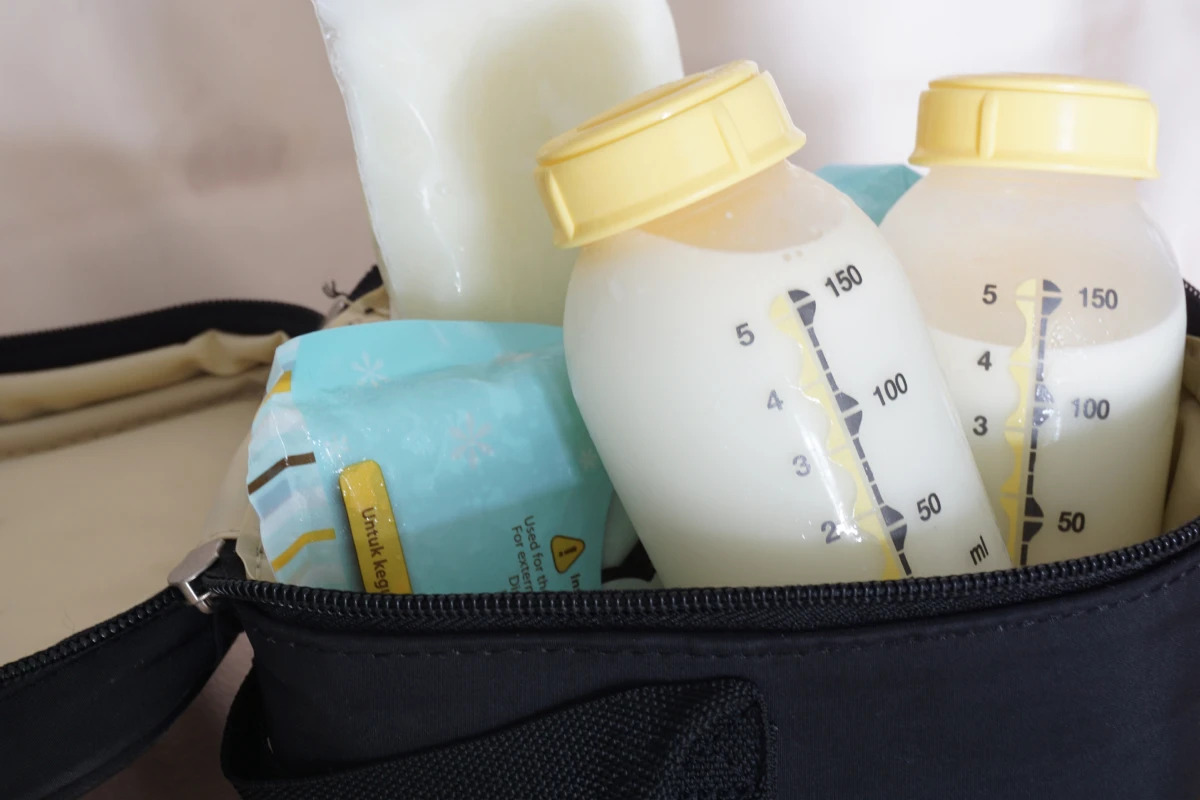
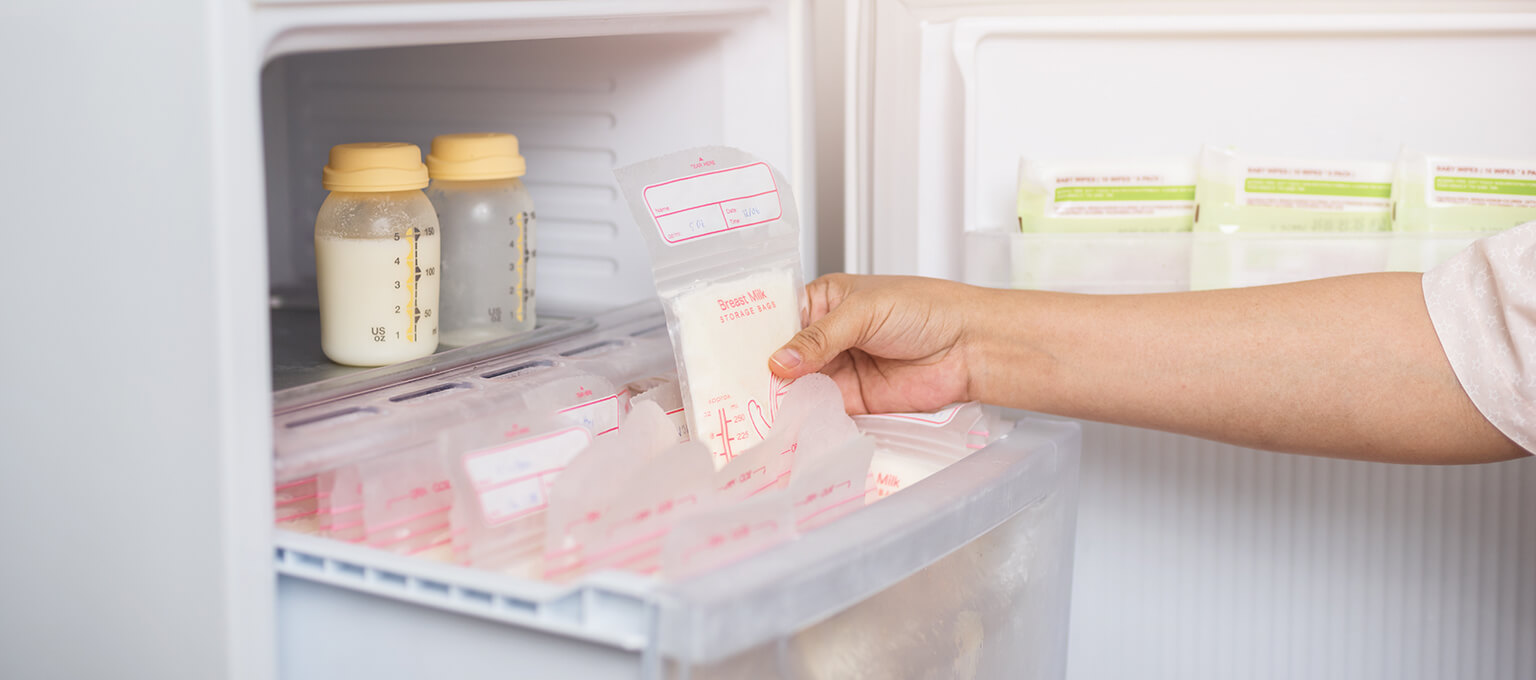

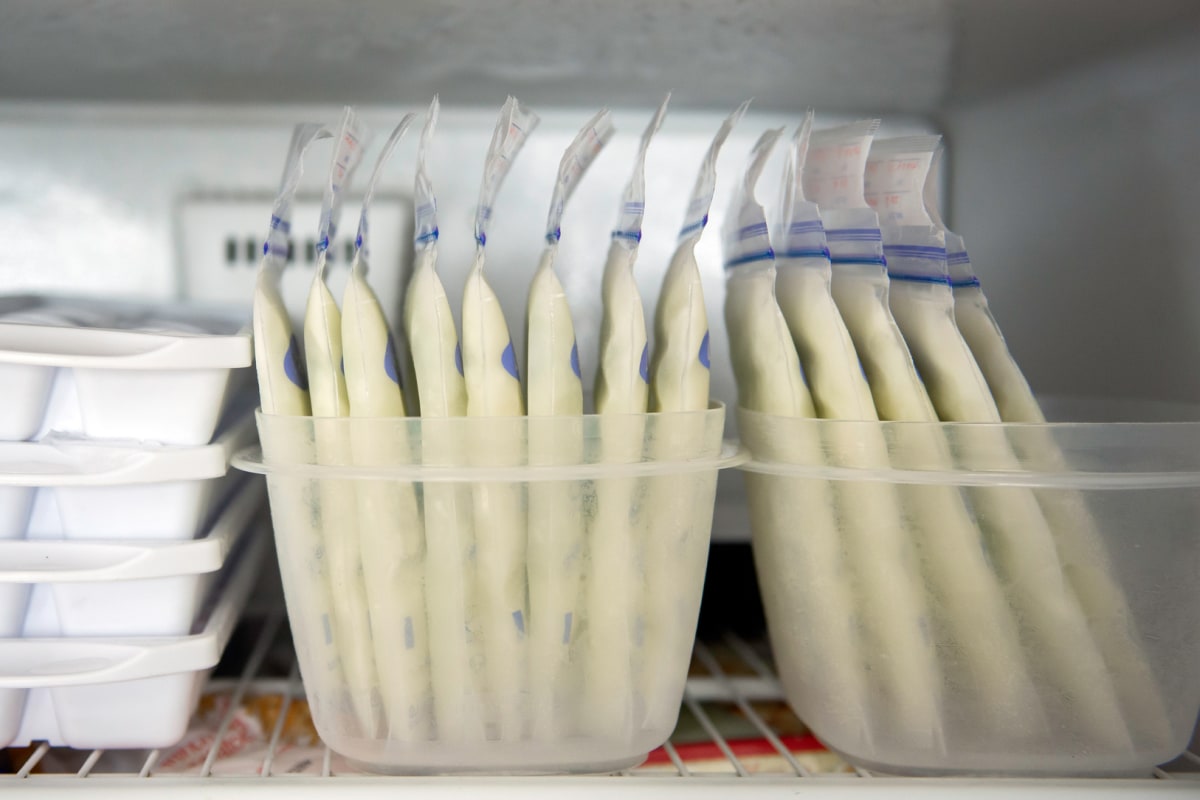
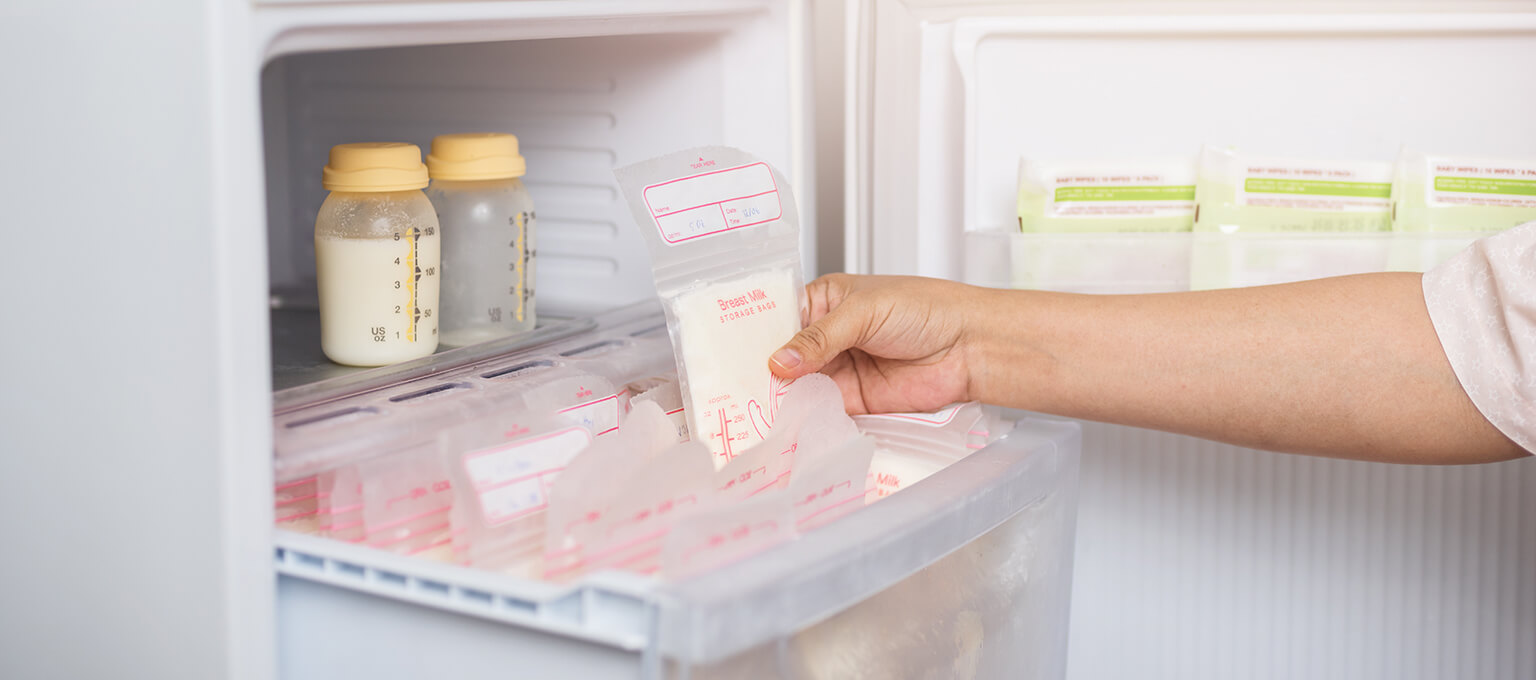

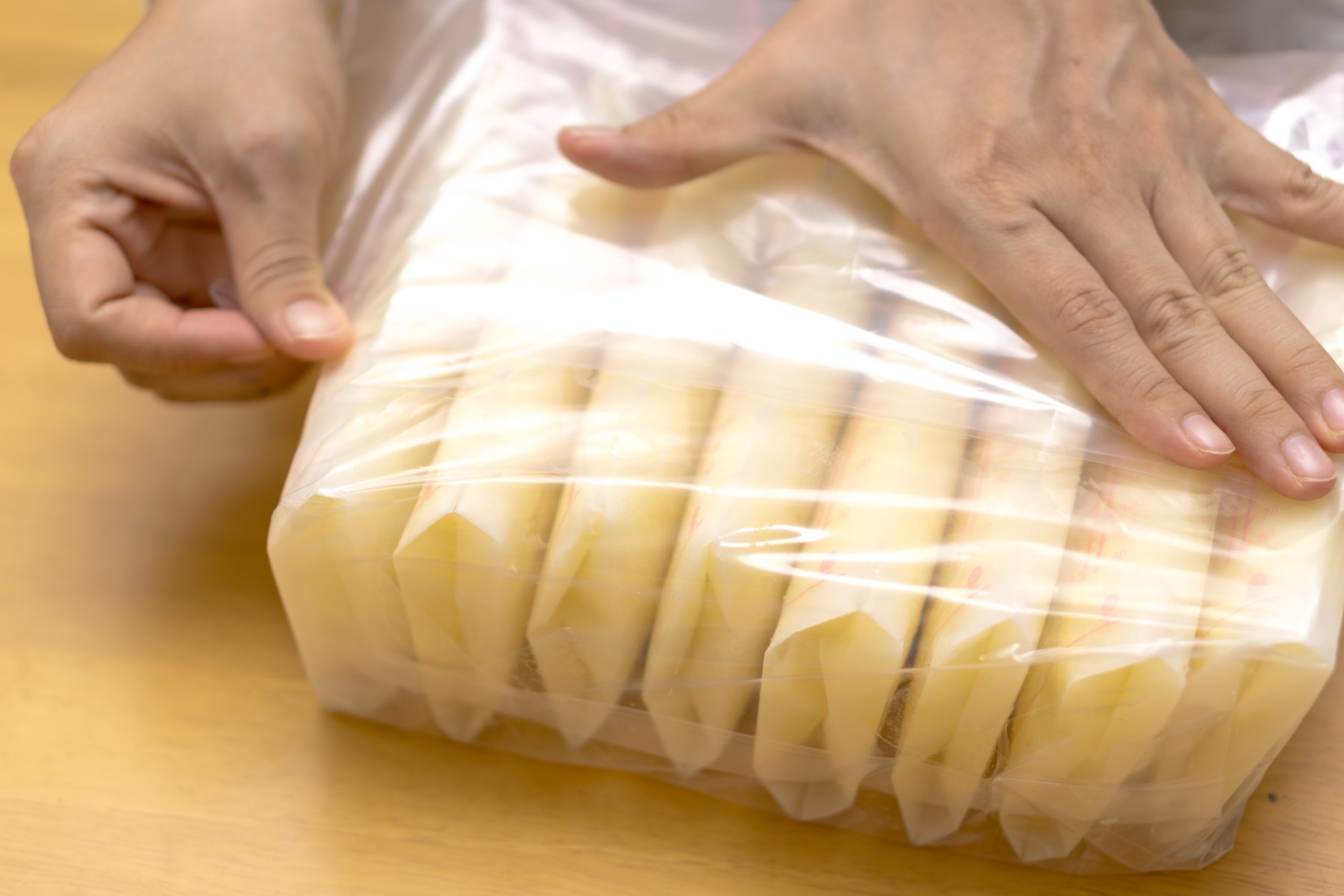

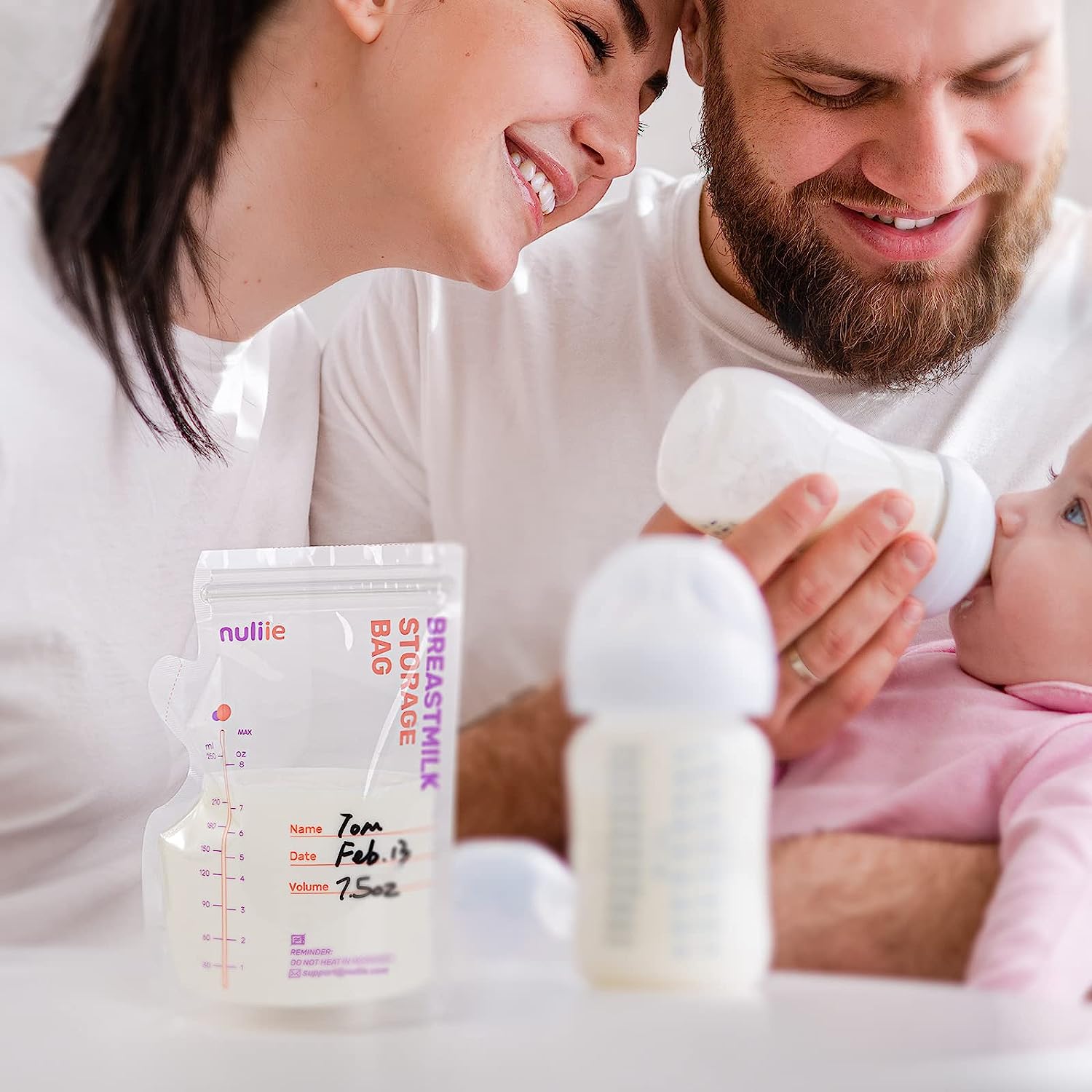
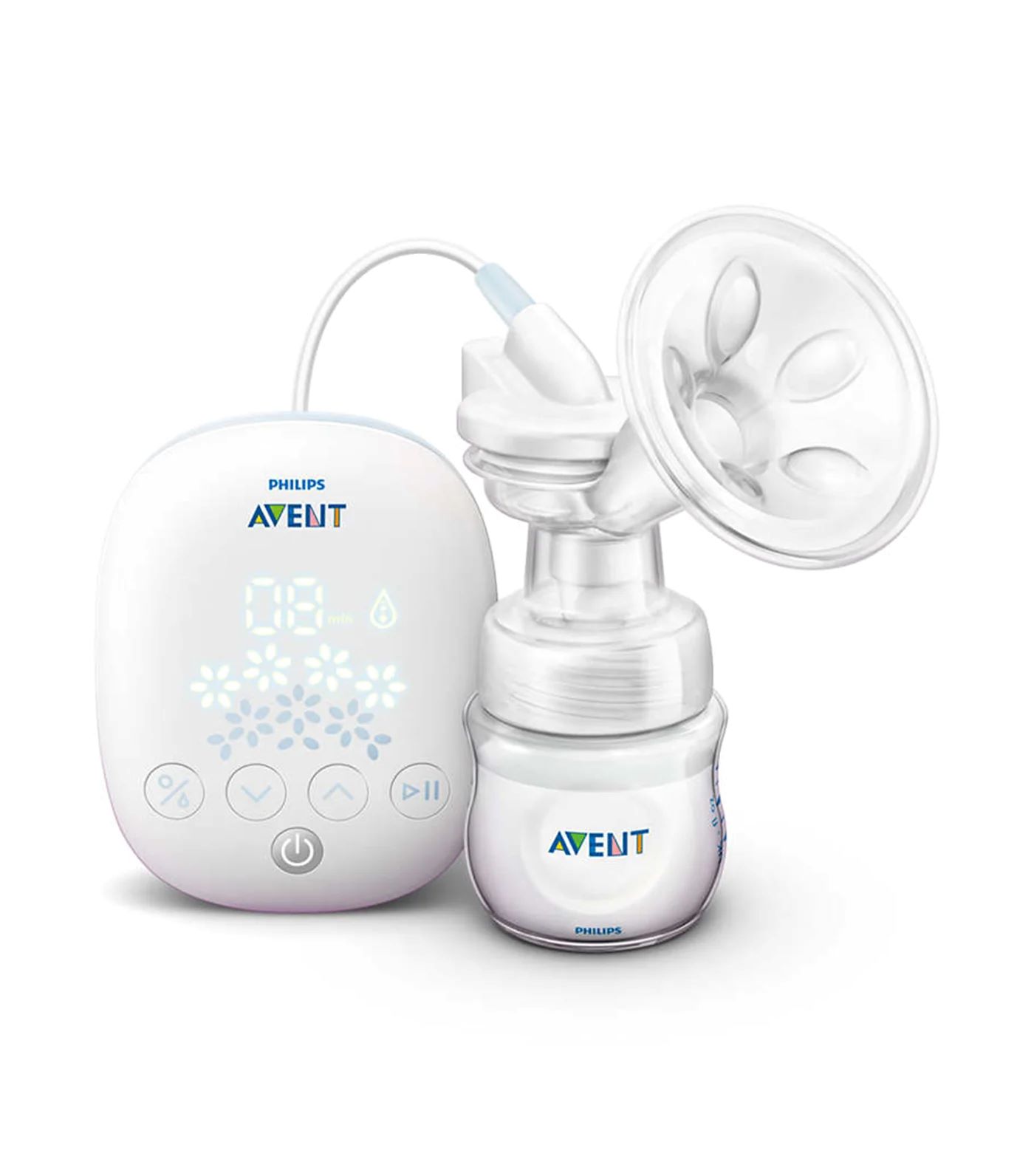

0 thoughts on “How To Store Pumped Breast Milk”